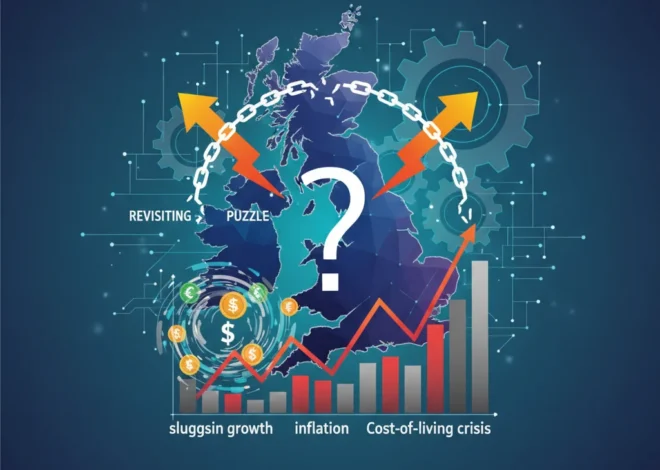
A System on the Brink: How a UK Benefits Fiasco Reveals a Crisis in Public Finance and a Tipping Point for Fintech
In the intricate machinery of a modern state, few functions are more critical than the timely distribution of social support. For millions, these payments are not just supplementary income; they are the bedrock of household financial stability. When this machinery fails, the consequences are immediate and severe. Recently, this stark reality came into sharp focus when HM Revenue & Customs (HMRC), the UK’s tax and customs authority, abruptly suspended child benefit payments to thousands of families due to a system error. The move, described by Members of Parliament as “cavalier and disastrous,” is more than just an administrative blunder. It is a glaring symptom of a deeper malaise afflicting public finance infrastructure—a system straining under the weight of legacy technology while the world of finance rapidly evolves around it.
This incident, while specific to the UK, serves as a powerful case study for leaders, investors, and finance professionals globally. It highlights the profound risks of technological neglect in public administration and underscores the urgent need to embrace the innovations shaping the modern economy. The story of a suspended benefit payment is, in reality, a story about systemic risk, the future of governance, and the transformative potential of financial technology.
The Anatomy of a “Cavalier” Failure
At the heart of the issue was an error in HMRC’s internal checks, which led to the sudden cessation of child benefit payments. While HMRC has since apologized, the damage was done. For the affected families, this was not a minor inconvenience. In an era of high inflation and economic uncertainty, this guaranteed income is a lifeline used for essentials like food, housing, and utilities. Its unexpected removal can trigger a cascade of financial distress, from missed payments and damaged credit scores to acute personal anxiety.
The severity of this failure was not lost on the UK Parliament’s Treasury Committee, which condemned the action. The term “cavalier” suggests a startling disconnect between the administrative process and the real-world human impact. This is a classic hallmark of a system that is not fit for purpose—one that lacks the resilience, intelligence, and empathy to function effectively in a complex modern society. The failure points to a system likely bogged down by:
- Data Silos: Government departments often operate with disparate, non-communicating databases, making a single, accurate view of a citizen’s status difficult to maintain. An error in one system can trigger disproportionate consequences in another.
- Manual Overrides and Brittle Logic: Legacy systems often rely on rigid, rule-based logic that cannot handle edge cases or nuance. A simple data mismatch that could be flagged for human review in a modern system can instead trigger an automatic, blunt-force action like payment suspension.
- Lack of Real-Time Verification: The inability to verify information in real-time means that by the time an error is detected and rectified, families have already endured days or weeks of financial hardship.
The economic ripple effects extend beyond individual households. Social safety nets are crucial macroeconomic stabilizers. They ensure a baseline of consumer spending that supports the wider economy. When these systems falter, they inject uncertainty and fragility, eroding consumer confidence and potentially dampening economic activity. It’s a stark reminder that the plumbing of public finance is as vital to national economic health as the policies crafted by central banks. The Dragon's New Gambit: How China's Climate Pivot is Reshaping the Global Economy
The Fintech Imperative: Rebuilding Trust with Technology
The solution to these deep-seated structural problems will not be found in incremental fixes or apologies after the fact. It requires a fundamental rethinking of how government delivers financial services, drawing inspiration and technology from the fintech revolution. A modern, resilient, and citizen-centric public finance system is not a futuristic dream; the tools exist today.
Imagine a system rebuilt on a modern technological foundation. Key innovations could include:
1. Unified Digital Identity: Instead of fragmented records scattered across departments, a secure, citizen-controlled digital identity could serve as a “single source of truth.” Leveraging technologies like blockchain could create an immutable, verifiable record of identity and eligibility. This would drastically reduce errors stemming from data mismatches and streamline interactions with all government services, not just benefits. According to a report by Deloitte, a well-implemented digital identity system can reduce fraud, improve service delivery, and boost economic inclusion.
2. Intelligent Automation and AI: Modern AI and machine learning algorithms can analyze vast datasets to detect anomalies with far greater sophistication than legacy rule-based systems. Instead of a blanket suspension, an AI-powered system could identify a potential discrepancy, calculate the probability of it being a genuine issue, and flag it for immediate human review—all without interrupting a citizen’s vital income stream. This proactive, data-driven approach is the core of modern risk management in private sector finance.
3. Open Banking and Modern Payment Rails: Governments are still catching up to the payment innovations that consumers now take for granted. By adopting principles from Open Banking and using modern API-driven payment rails, agencies like HMRC could offer greater transparency, speed, and flexibility. This could enable real-time payment tracking for citizens and allow for more agile and responsive adjustments, a far cry from the slow, opaque processes that currently dominate. The UK’s own Open Banking initiative provides a powerful blueprint for how this could be extended to the public sector.
To illustrate the chasm between the current state and a potential future, consider the following comparison:
| Function | The Legacy Government Approach (Current State) | The Modern Fintech Approach (Future State) |
|---|---|---|
| Identity Verification | Manual checks, siloed departmental data, physical documents. Prone to errors and delays. | Secure, portable digital identity using cryptography or blockchain. Verified once, used everywhere. |
| Eligibility Checks | Rigid, rule-based systems. A minor data mismatch can trigger a complete payment halt. | AI-powered analytics. Flags anomalies for review without disrupting service, learns from patterns. |
| Payment Processing | Slow, batch-based systems (e.g., BACS). Opaque, with multi-day clearing times. | Real-time payment rails (e.g., Faster Payments). Instant, transparent, with immediate confirmation. |
| Citizen Communication | Formal letters sent by post, often arriving after the problem has occurred. Call center bottlenecks. | Instant digital notifications (SMS/app), secure messaging portals, AI-powered chatbots for support. |
This is not merely a technological upgrade; it’s a paradigm shift from a process-centric to a citizen-centric model of governance. A Fragile Truce: Senate Passes Deal to End Shutdown, But What's the Real Cost to the Economy and Your Portfolio?
The Investment and Macroeconomic Angle
For investors and business leaders, this issue extends far beyond social policy. The efficiency and reliability of a nation’s government are fundamental components of its investment thesis. The HMRC failure touches upon several key areas relevant to the stock market and broader investment strategies:
- The Rise of “GovTech”: This incident is a powerful advertisement for the GovTech sector. Companies that provide the modern financial technology, cybersecurity, and data analytics solutions needed to overhaul public services represent a significant growth area. Investors are increasingly recognizing that the public sector’s technological debt must be paid, creating a massive market for innovative firms.
- Sovereign Risk and Confidence: On a macroeconomic level, a government that struggles with core administrative functions can be perceived as a higher risk. International investors and markets prize stability and predictability. High-profile failures in basic public finance can subtly erode confidence, which can have long-term impacts on a country’s bond yields and currency stability. As noted by credit rating agencies like Moody’s, institutional effectiveness is a key factor in assessing sovereign creditworthiness (source).
- Economic Resilience: A robust, technologically advanced social safety net is a crucial part of a resilient economy. It allows the labor market to function more smoothly and provides a buffer during economic downturns. For those involved in the stock market and other forms of trading, a stable consumer base is essential for corporate profitability and overall market health. Investing in this public infrastructure is, therefore, a direct investment in macroeconomic stability.
Paradise Under Pressure: A Financial Deep Dive into the Tourism Sector's Economic Crisis
Conclusion: From Apology to Action
HMRC’s apology is a necessary first step, but it is not a solution. The “cavalier” suspension of child benefit payments should serve as a catalyst for profound and urgent change. This is not a problem that can be solved with a software patch or a procedural review. It demands a bold vision for the future of public administration—one that fully embraces the transformative power of financial technology.
For citizens, this means demanding services that are as reliable, transparent, and efficient as those they receive from their banks. For policymakers, it means prioritizing investment in modern digital infrastructure as a core component of national security and economic prosperity. And for investors and finance professionals, it highlights a critical intersection of technology, governance, and economics, revealing both significant risks and immense opportunities. The future of a fair and functional state in the 21st century depends on closing the technological chasm between the people and the institutions designed to serve them.


